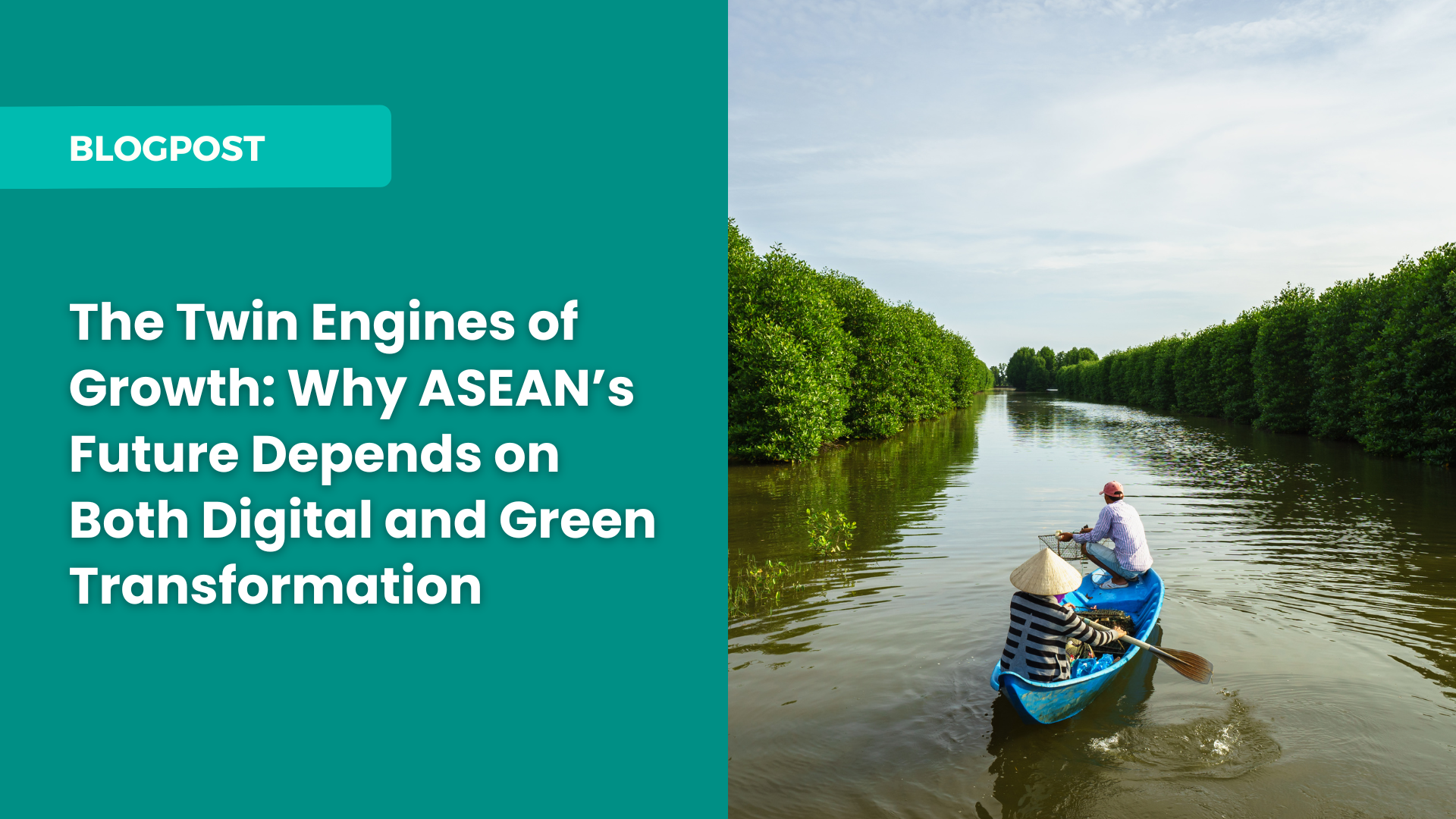Published 3 July 2025 –
A recent study from UOB painted a stark picture of the new reality for businesses in ASEAN and China: an overwhelming 85% of leaders are bracing for greater supply chain disruptions, a figure that serves as a collective wake-up call for the entire region.
This is not a cyclical downturn or a temporary bottleneck; it is a fundamental shift in the landscape of global trade, driven by the dual pressures of geopolitical volatility and an accelerating wave of climate-related regulations.
For decades, Asia’s growth has been powered by its integration into global supply chains, but the rules of that game are changing.
To simply survive is no longer enough; to thrive, businesses must now build a new kind of resilience — one that is both intelligent and sustainable.
The National Response: A Necessary but Incomplete Push for “Smart” Industry
In response to these global pressures, nations are taking massive action.
Take a look at Singapore, which in its recent Budget 2025 committed a S$3 billion top-up to its National Productivity Fund, a clear signal of its intent to foster a world-class “smart manufacturing” sector.
The focus is squarely on driving technology adoption, automation, and digitalisation to boost productivity. This push is essential.
Investing in digital infrastructure is a critical step towards creating more efficient and transparent operations. It allows a business to build its “digital twin” — a complete virtual model of its processes, assets, and systems.
However, a critical question remains: what good is a perfectly efficient smart factory if its products are barred from entering key global markets?
The Missing Link: Unifying Digital and Green Transformation
Herein lies the central challenge that many business leaders are still grappling with: they often view digitalisation and sustainability as separate strategic pillars, managed by different teams with different budgets and objectives.
This is a critical, and potentially fatal, miscalculation. Consider that a state-of-the-art manufacturing plant in Singapore can use AI and robotics to optimise every second of its production line.
But if it cannot produce a verifiable carbon footprint report that complies with the International Sustainability Standards Board (ISSB) Reporting Standards, as mandated by the Singapore Exchange (SGX), its efficiency becomes irrelevant.
A logistics company can use GPS to track its fleet with pinpoint accuracy, but if its clients start demanding Scope 3 emissions data, that tracking data is only half the story.
The truth is that the “digital twin” and the “green twin” are not two separate entities. They are two sides of the same coin.
A truly resilient business must be able to answer not only “Where are my assets?” but also, “What is their environmental impact?” Not just “How fast can I produce this?” but, “What is the embodied carbon of my product?”
In the new era of global trade, sustainability data is business data.
Bridging the Twin Engines gap with ESG reporting platforms: A Practical Path Forward
For many, especially the Small and Medium-sized Enterprises (SMEs) that form the backbone of Asia’s economy, this dual challenge can seem insurmountable.
Lacking the resources and in-house expertise of large corporations, they are most at risk of being left behind.
However, the same technological forces driving this disruption are also providing the solution. A new generation of accessible, data-driven ESG reporting platforms is emerging, designed to bridge this gap.
These digital ESG solutions are no longer a “nice-to-have” for the corporate sustainability department; they are becoming essential infrastructure for trade and commerce.
They work by offering a full range of ESG solutions such as translating complex operational data — for example, utility bills, fuel consumption, and raw material procurement — into simple, verifiable ESG and Greenhouse Gas (GHG) emissions metrics.
By automating the process of carbon accounting and aligning reports with a multitude of international sustainability reporting standards (from GRI to ISSB), these ESG reporting platforms drastically lower the barrier to entry for SMEs.
This is not just about compliance. It is about competitiveness. The ability to produce a credible, data-backed sustainability report is fast becoming the ticket to entry for premier global supply chains.
It unlocks access to green financing from institutions that now demand ESG performance, and it wins tenders with the growing number of developers and corporations that have their own ambitious climate targets to meet.
A New Vision for ASEAN
The pressures facing Asia are immense, but so is the opportunity. Embracing the reality that digital and green transformations are a unified strategy will enable the region to leapfrog the competition.
We can build a future where our reputation is not just for efficiency and quality, but for producing the smartest, most sustainable, and most resilient products and services in the world.
The journey is complex, but it begins with a simple first step: understanding your data. The businesses that start building their twin engines of growth today will be the ones that power the future of ASEAN’s economy.
To find out how ESGpedia’s end-to-end digital ESG solutions can accelerate your sustainability reporting and ESG excellence journey, get in touch with our team today.





